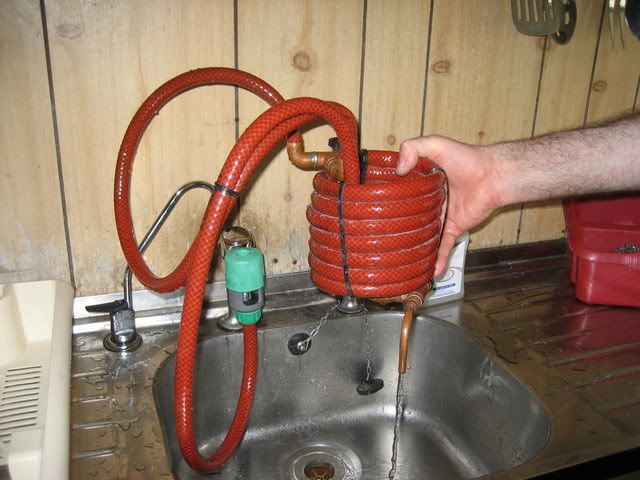Thermometer accuracy.
To test the accuracy of a thermometer is straightforward. To determine if it is accurate
at zero degrees, place it in a container containing crushed ice. It should read 0c degrees.
To determine if it is accurate at boiling point, place it in a pan of boiling water. It
should read 100c.
The thermometer which I have used on this website reads 0c in the ice & 98c in a pan of boiling
water.
Hydrometer accuracy.
Most home brew hydrometers are calibrated to read 1.000 in a
liquid of 20c temperature. To test this, fill a plastic trial jar, the type on the cooling page, with water and adjust
the temperature to 20c. Then place the hydrometer in the jar and the hydrometer should read 1.000. The two hydrometers
which I use both read 0.998 when I tested them; therefore I simply add another .002 onto any reading I take at 20c.
Cleaning the copper pipes on a strainer.
A good way to do this is to trim a bottle brush until it will slide
inside the copper tubing, allowing you to give them a thorough scrubbing internally.
Cleaning a counterflow wort cooler.

I have found that the water outlet hose on my cooler will
push into the wort inlet. Therefore, I simply push the hose outlet into the copper wort inlet. I then
connect the hoselock onto the hot water tap and turn it on to allow the wort cooler to be flushed out with hot water.
This is an ideal way to give the wort cooler a good flushing out after use.
Aeration.
I have mentioned aeration quite a few times on these pages, stressing the importance of allowing
it to occur at certain stages and stressing the importance of not allowing it to occur at other stages.
To clarify this, before adding the yeast to a brew, whether it is lager, beer or wine,
it is important to have oxygen present in the brew to allow the yeast to grow. This is easily achieved by giving the
brew a thorough stir with a plastic paddle or spoon, or transferring it from one vessel to another without using plastic tubing.
This will allow the brew to "splash", which will allow it to absorb oxygen.
After the yeast has been added, the brew must not be allowed to "splash", as this causes
the brew to absorb oxygen, which is undesirable at this stage. This is easily prevented with the use of plastic tubing
which reaches to the bottom of the collecting vessel when transferring a brew from one vessel to another, or when bottling
a brew.



